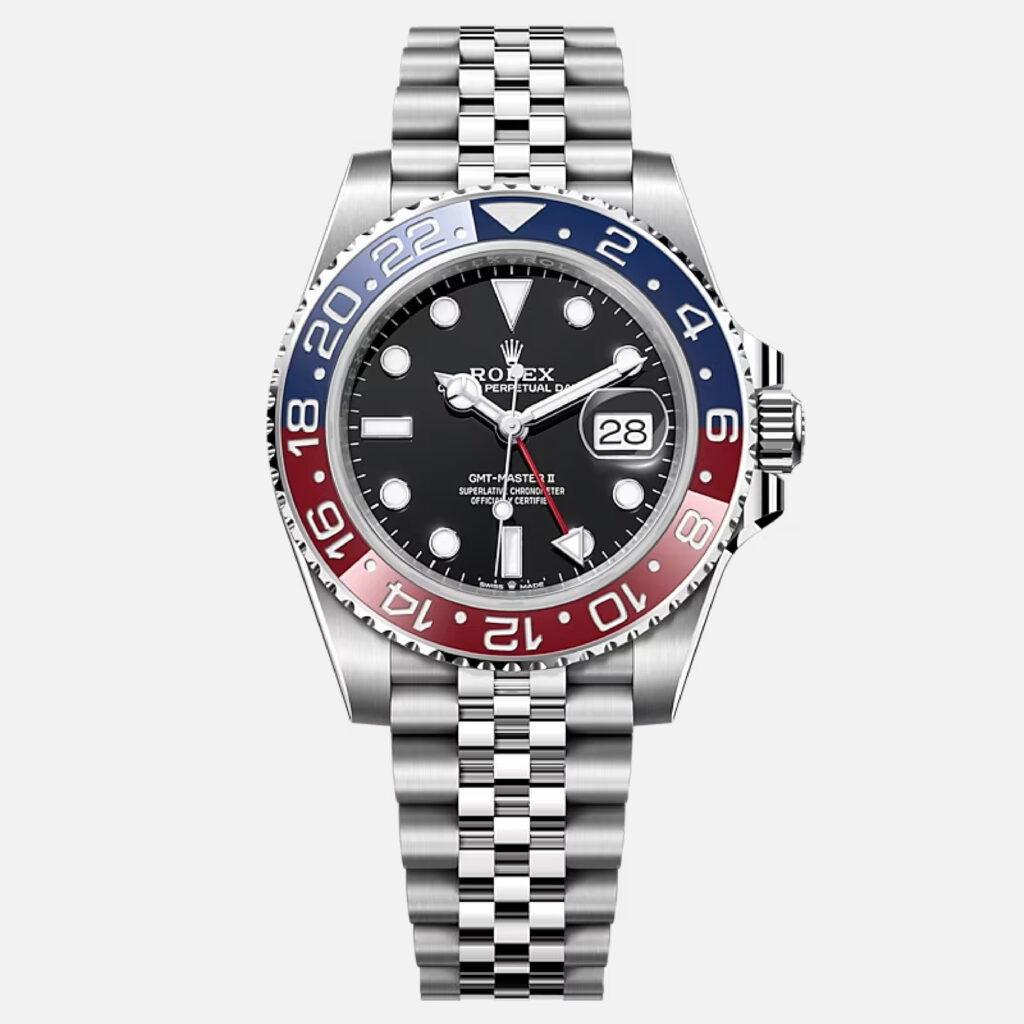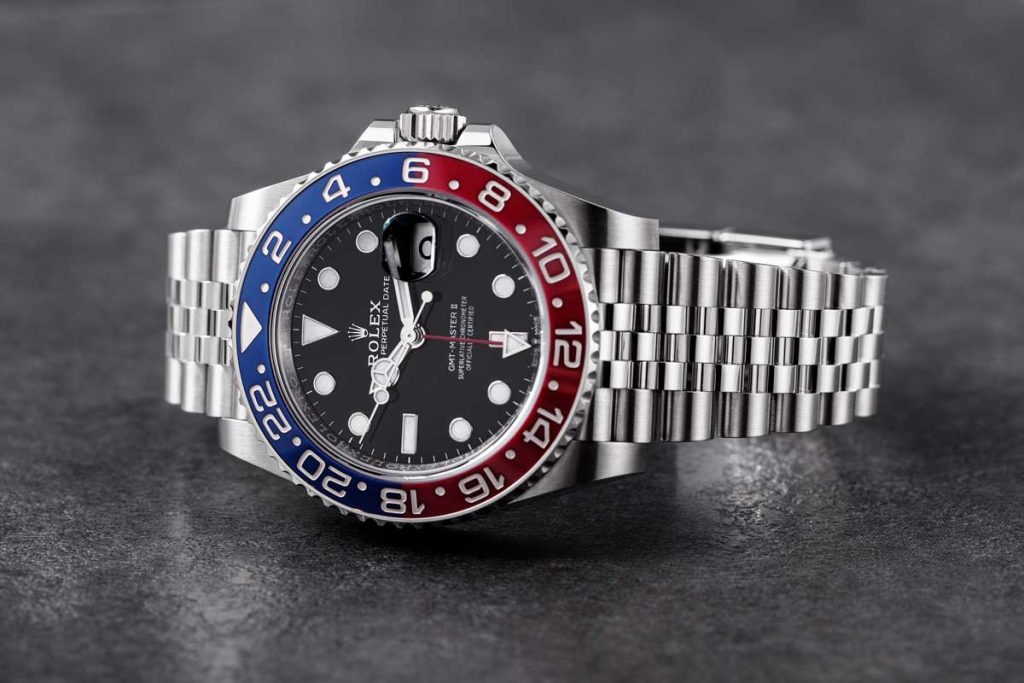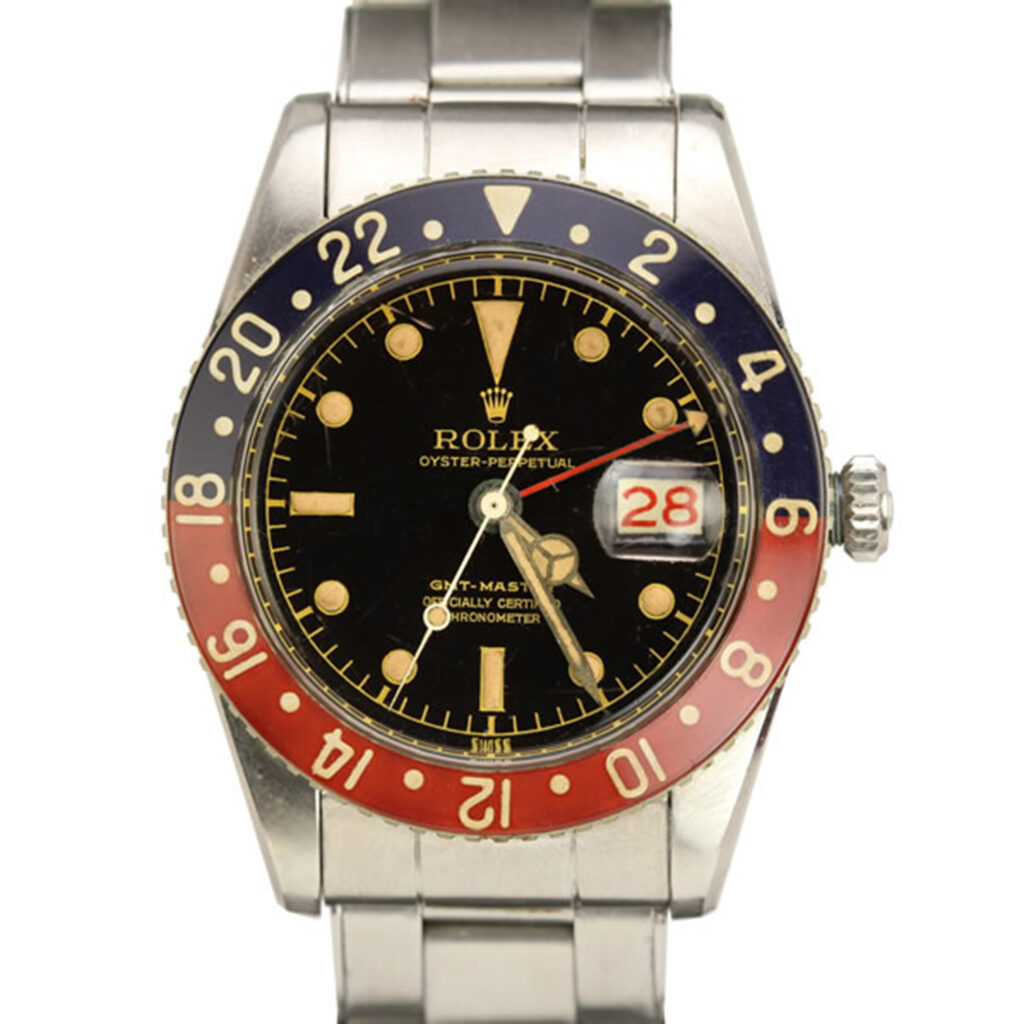Editor's Picks
Master Stroke — The Rolex GMT-Master: Part 1


The 2018 Oystersteel GMT-Master II Ref. 126710 BLRO on the Jubilee bracelet (© Revolution)
The Black Bay GMT, though, is blessed with the Pepsi bezel and it looks very cool. The all-red 24-hour hand utilises the snowflake seconds hand shape, but the overall look is very familiar. The first surprise for many was the use of the GMT text on the dial. Whilst it is a generic term for dual-timezone timepieces, it is very closely linked to the Rolex watches. But it was a joint launch campaign and this leads to the second surprise.

The GMT-Master saga began, as I mentioned above, in 1954 when Rolex unveiled the ref. 6542. The watch was housed in the classic Oyster case, which was 38mm in diameter and had a 6mm screw-down winding crown. This was one of the first sports watches from Rolex and construction-wise, it set the standard for the foreseeable future.
As with the present-day watches, the 6542 case was essentially of three-piece design. The mid case is what held the movement and dial, onto which a bezel ring was pressed to keep the acrylic crystal in place. The third piece of the case was the screw-on case back. This system, combined with the screw-down winding crown, is what made the Oyster case waterproof and able to withstand more than a slight splash – it was guaranteed down to an underwater depth of 100m.
Taking to the Skies
The dual-timezone feature was a useful tool for pilots and those who were travelling, often across different continents. The ability to track local and home time was especially useful for commercial pilots. The American airline company, Pan American Airlines (or Pan Am for short), approached Rolex and asked the brand to create a watch for its pilots. This partnership led to the development of the GMT-Master and in particular the first ref. 6542.
The commercially released watches housed a base Calibre 1030 which was modified to include the 24-hour hand and was given the calibre number 1065. This chronometer-rated movement was a four-hand engine with date function. The 24-hour hand completed one full rotation every 24 hours and the bi-directional bezel could be rotated to allow wearers to monitor the home time once they had adjusted their watch to local time or vice versa.
Additionally, the Bakelite bezels had luminous markers that were filled with the highly radioactive radium. In the early 1960s, Rolex began switching to tritium and started a programme of switching out the Bakelite bezels. Therefore, the combination of the insert’s fragility and radioactivity meant that very few survived and so finding a 6542 with an original insert is a real coup.
In addition to the steel 6542, there was also a yellow gold version. Sharing the same case proportions of the steel watch, the gold version also had a Bakelite bezel but instead of the Pepsi colour scheme it was all brown. This was the perfect complement to the matching brown dial and gold hands. The hands were not of the Mercedes pattern hands style seen on the steel version, but a more elegant and dressier version more commonly seen on Datejusts and Day-Dates. The dials also feature applied hour markers in yellow gold with small luminous dots in the middle – now known as “nipple dials”.
Second Wave
In 1959 Rolex launched the second series of the GMT-Master, a reference that would run until approximately 1980, the ref. 1675. This new reference featured the new 1530 series movement, in the case of the GMT-Master: Calibre 1565. The most striking feature of the updated watch was the presence of crown guards. The case had been enlarged by 2mm and was now 40mm (excluding the crown guards) and was again available in both stainless steel (1675/0) and yellow gold (1675/8). Interestingly, until approximately 1967 the yellow gold watch case was without the crown guards. The case was the larger 40mm size but it looked dressier due to this lack of crown guards. Rolex also introduced the aluminium insert as standard on the ref. 1675. On the steel version, the Pepsi bezel was standard and on the yellow-gold watch the insert was brown. The 1675 went through two crown guard versions, too. The first iteration is referred to by collectors as pointed crown guards (PCG) or cornino in Italian. This was due to the thin and sharp profile of the guards. The later version is much thicker and rounded and can be referred to as “rounded crown guards” as per the lingo used for Submariners.
The end of the 1970s heralded an era now referred to as the “transitional” period for Rolex. The brand began to introduce sapphire crystals, the quick-set date function and a move back to glossy dials but with luminous filled white-gold applied hour markers. The lines that had these features introduced were the GMT-Master, Submariner and Explorer 2. Not every line had them all introduced at the same time, however.
The Explorer 2 got all three in its ref. 16550. The Submariner ref. 16800 got the quick-set date function and sapphire crystal but a matte dial initially (which transitioned to the white-gold surround hour plots eventually). The GMT-Master ref. 16750 was introduced in 1979 and had only the quick-set date function at first. The matte dials were eventually phased over to the white-gold surround hour markers dials but interestingly it was never fitted with a sapphire crystal. Collectors prefer the early 16750s with the matte dial and these watches command a premium over the later versions with glossy dial version.
In the mid-1980s, Rolex began introducing the next generation of sports watches. The old references were replaced with new, for example out went the Submariner non-date ref. 5513 and in came the 14060. The GMT-Master was renamed the GMT-Master II with the new ref. 16760. The watch now had, as standard, a sapphire crystal, quick-set date and glossy dial with white-gold surround hour markers. The big innovation and the reason for the addition of the “II” in the name was a new independently setting 24-hour hand (a quick-set feature).










